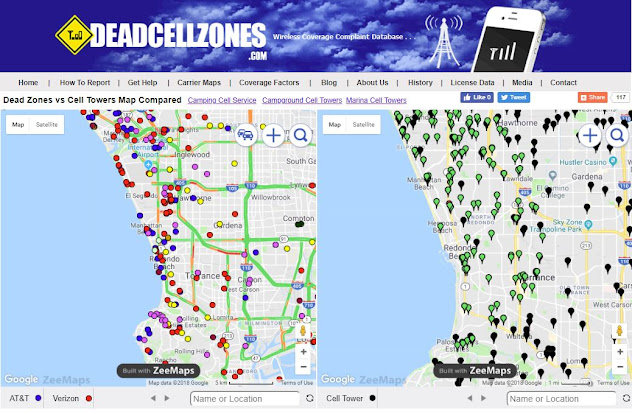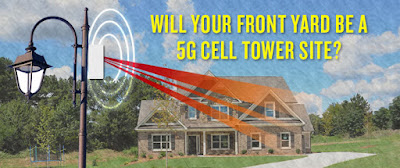This post explains why your mobile signal strength is weak and identifies
which solution will be your best means of getting stronger cell reception in
your home, vacation home or small office.
Why do some
buildings have weak cell signal
The cause for weak signals inside of a building can stem from a few
different sources. As a general rule, anything between your cell phone and the cell
tower will weaken the radio frequency (RF) signals that give your phone the
ability to call, text and stream data.
Here is a list of things that block mobile signals:
·
Non-Conductive
Construction Materials have a moderate impact on your mobile connectivity. This includes
materials that cannot conduct electricity: drywall, plastic matter, wood, glass
and others will modestly impact your mobile connectivity but, in most cases,
will not completely block a strong signal.
·
Conductive
Construction Materials have a significant impact on your mobile signal and these
materials, like tin, copper, silver, aluminum, and others, have the ability to
render a strong mobile signal completely useless.
·
Organic
Materials can have a wide-ranging effect on your signal. Depending on the
size of the impediment and its material makeup, these can either modestly dull
or completely block a strong signal. For example, mountains, hills, large
snow-mounds, dense tree or plant matter, bodies of saltwater (conductive
material), and more can completely block a strong signal. On the other hand, sparse tree or plant matter, small bodies of salt or freshwater, small or
loose-packed snow piles and others may only moderately reduce the signal
strength.
·
Weather like
fog, snow, rain, sleet, hail, dust, and more, can have a weakening impact on
your signal. Depending on the density of the weather system and the distance
the signal needs to travel, these can either dull or completely block a strong
cellular signal.
·
Mobile
Tower Direction & Locations send a limited strength signal
in a general direction. If your mobile device is further than the power of the
mobile tower can reach or does not fall within the tower’s window of reception,
you could receive a reduced signal or none at all.
·
User
Capacity is not infinite on mobile towers. As more simultaneous users send
and receive signals from a nearby mobile tower, the less power the tower has to
offer each user.
·
RF
Interference can be caused by being surrounded by other devices that emit an
RF frequency that disrupts the signal you are using to make calls, send or
receive texts, or stream data using a mobile signal. Naturally, this has a
dulling impact on the strength of a usable signal.
Solution
1: Signal Booster
Signal boosters are a
very common choice for most buildings. The defining requirement for a signal
booster is that the building has a usable signal existing just outside or
nearby to the building. Signal boosters capture that outside signal, amplify
the signal’s strength and retransmit that signal within the structure. These
are wideband solutions, which means they support all US, Canada and Mexico mobile
network providers simultaneously. This includes Verizon, AT&T, T-Mobile, Sprint, Bell, Telus, Rogers Wireless, Sasktel, Bell MTS, Telcel, and all others. Signal boosters support all voice, text, and data signals for
2G, 3G and 4G LTE and support buildings as small as 5 square feet and up to
just under 500,000-square-feet. Prices range from a few hundred dollars for a
small or medium-size space to over one thousand for larger spaces.
Solution
2: Femtocells
Femtocells are often the go-to solution for customers who only
need coverage for a few users in a small space and who all use the same mobile
network provider. These are carrier-specific solutions, so if you buy a Verizon
femtocell anybody with another carrier will be unable to get cellular service.
These are great for buildings that have no signal outside or nearby to the
building but have a strong internet connection. These work by creating a mobile
hotspot in your home that pulls from your internet connection. These cost
between $100 and $400 and require a monthly fee on your internet bill, which
varies from provider to provider. These are limited to four simultaneous users
and the maximum coverage area on these is usually one or two small rooms.
Solution
3: Active DAS
Active distributed antenna systems (DAS) are most often used in
very large buildings above 500,000-square-feet. These solutions require
approval by any carrier that the system supports because Active DAS uses base
stations and remote nodes that are connected directly to the carrier’s network.
This being the case, these solutions are more expensive, require a substantial
amount of time before installing, and, in turn, are typically the option of
choice for very large buildings and businesses – think sports stadiums, very
large hotels, casinos, and more.
Each of these presents a great solution for a specific application.
Let’s wrap it up with a simple summary of which mobile solution will be best
for your building.
Choose Active DAS for
very large buildings that have time, money and a high user count. Femtocells are best for small spaces
with strong internet, no outside signal and very few users who are all on the
same mobile network. Signal boosters
for small, medium and larger spaces up to 500,000-square-feet that have a
decent outside signal and need coverage for all carriers throughout the
building.




























